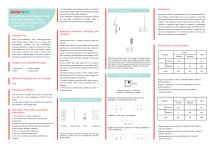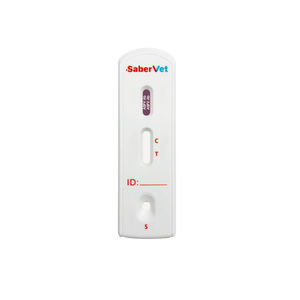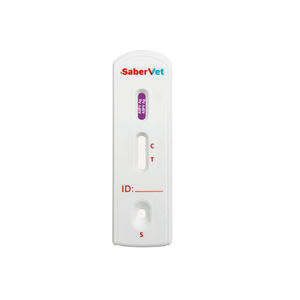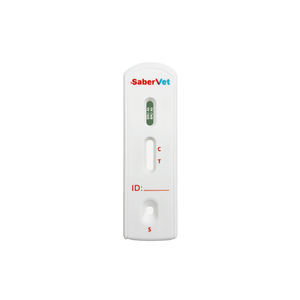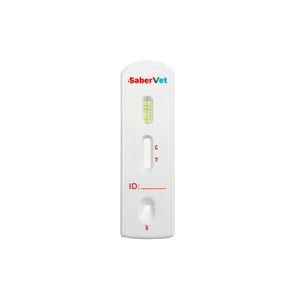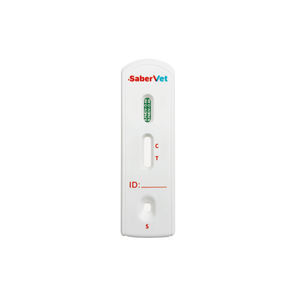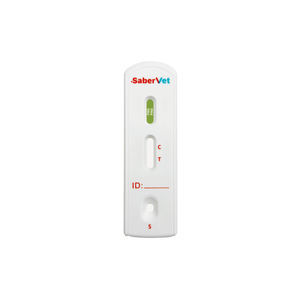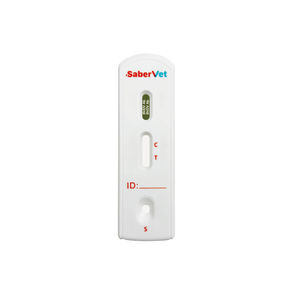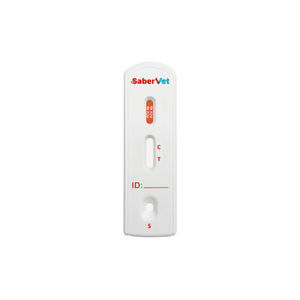
- Laboratory
- Laboratory medicine
- Rapid infectious disease test
- Hangzhou Antigenne Technology Co. Ltd
- Company
- Products
- Catalogs
- News & Trends
- Exhibitions
Rapid infectious disease test SaberVetveterinaryfor swinevirus
Add to favorites
Compare this product
fo_shop_gate_exact_title
Characteristics
- Applications
- for infectious diseases
- Application field
- veterinary
- Patient type
- for swine
- Micro-organism
- virus
- Sample type
- urine, feces, saliva, mucus
- Format
- cassette
Description
Foot-and-Mouth Disease Virus (FMDV) type O is a highly contagious virus that mainly affects cloven-hoofed animals such as pigs, cattle and sheep.
Clinical signs and symptoms
The clinical symptoms of swine foot-and-mouth disease vary depending on the severity of infection, the age of the animal and the strain of the virus:
Oral and hoof lesions
Blisters and ulcers: Blisters appear in the mouth, tongue, gums, nasal passages, crown of hoof and hoof, and ulcers form when the blisters rupture.
Salivation: Infected pigs salivate profusely due to oral pain.
Lameness: Infected pigs can limp and have difficulty standing due to hoof blisters and ulcers.
Systemic symptoms
Fever: An increase in body temperature, usually above 40°C.
Anorexia and fatigue: decreased appetite and low energy.
Decreased milk production: Lactating sows produce significantly less milk.
Piglet symptoms
Acute death: Suckling piglets, in particular, may die suddenly due to myocarditis and severe dehydration.
Transmission route
Direct contact
Animal-to-animal transmission: spread through direct contact with the bodily fluids (saliva, mucus, urine, feces, etc.) of infected animals.
Airborne:
Droplet transmission: The virus can be spread by airborne droplets, especially in confined and poorly ventilated environments.
Indirect transmission:
Contaminated feed and water: Waste from infected animals contaminates feed and water.
People and equipment: Workers and equipment of infected animals can act as vectors for transmission of the virus.
Environmental transmission: The virus can survive in the environment for some time, spreading through contact with contaminated environments.
Exhibitions
Meet this supplier at the following exhibition(s):

Other Hangzhou Antigenne Technology Co. Ltd products
Livestock
Related Searches
- Blood rapid diagnostic test
- Rapid lateral flow test
- Immunoassay rapid diagnostic test
- Cassette rapid diagnostic test
- Virus rapid diagnostic test
- Serum rapid diagnostic test
- Plasma rapid diagnostic test
- Infectious disease rapid diagnostic test
- Whole blood rapid diagnostic test
- Rapid respiratory infection test
- Urine rapid screening test
- Bacteria rapid diagnostic test
- Rapid feces test
- Clinical rapid diagnostic test
- Nasal rapid diagnostic test
- Obstetrical/gynecological rapid test
- Rapid oral flu test
- Dog rapid test
- Coronavirus rapid diagnostic test
- Laboratory rapid diagnostic test
*Prices are pre-tax. They exclude delivery charges and customs duties and do not include additional charges for installation or activation options. Prices are indicative only and may vary by country, with changes to the cost of raw materials and exchange rates.


